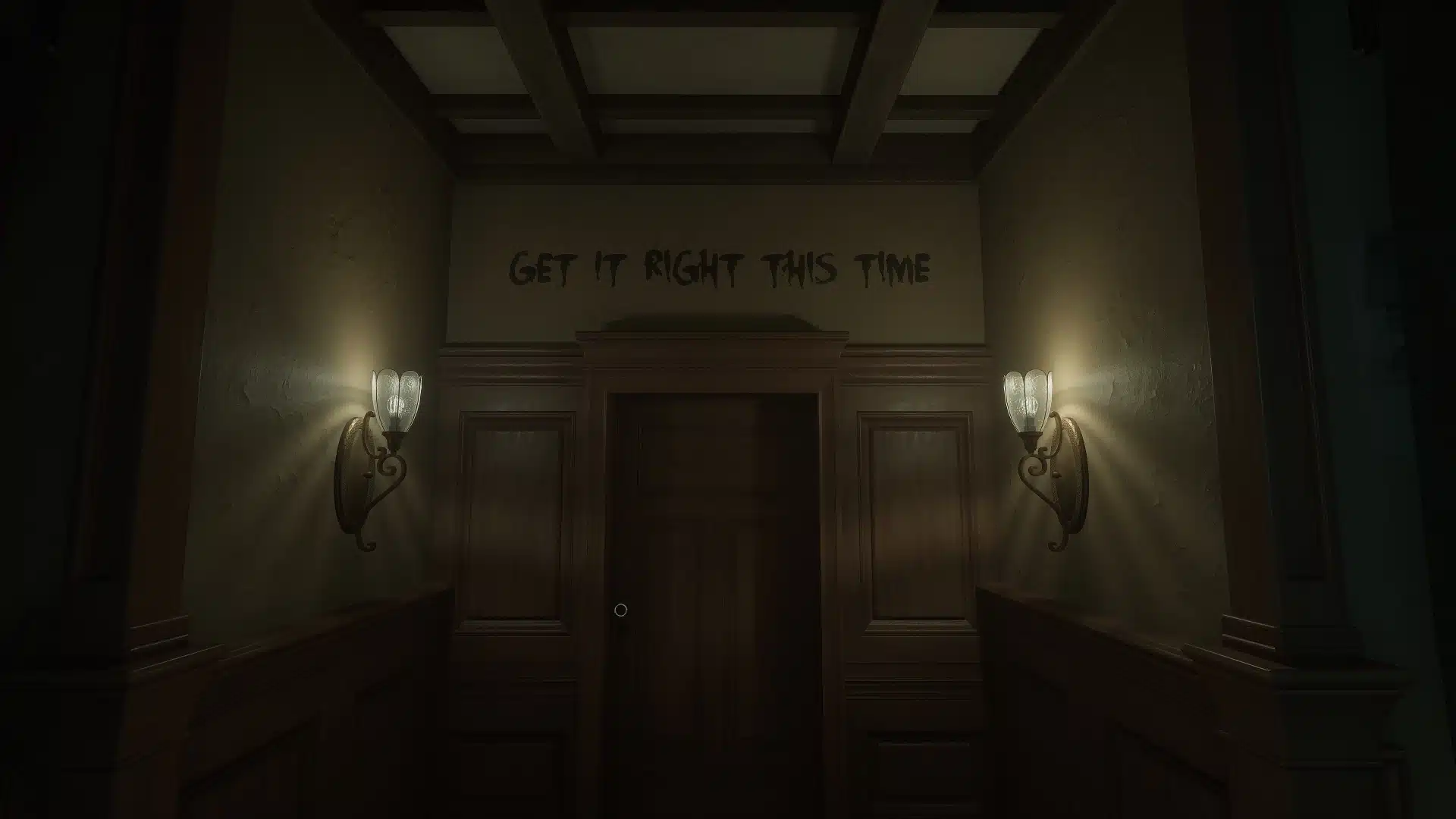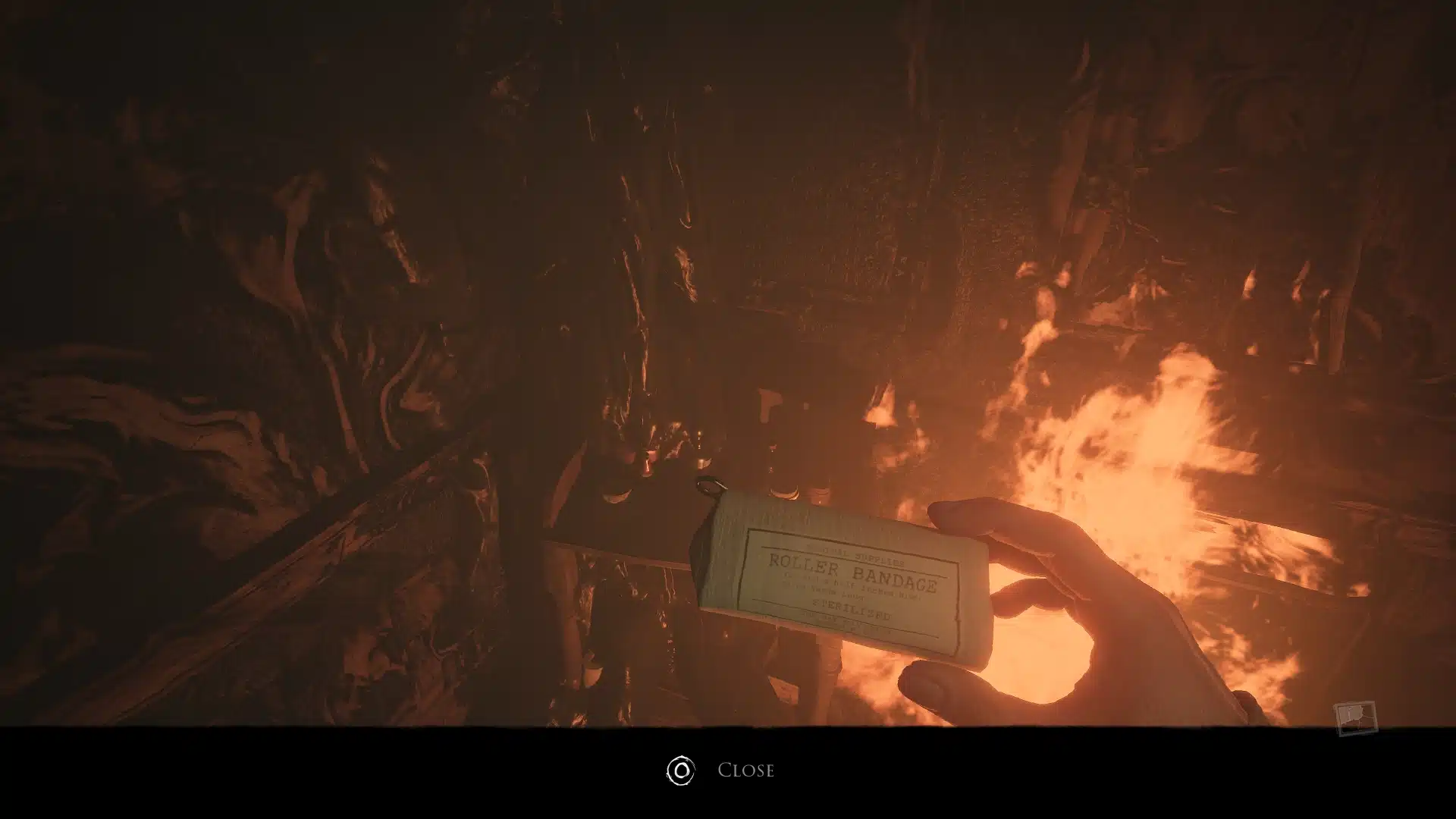Layers of Fear originally released in 2016 on the last generation of consoles. It has been given new life in the form of something of a remake, and we spent some time running through the houses of horror on the PS5 version to render our verdict. Is this more than just a fresh coat of ray-tracing paint and improved textures? Let’s find out.
Improved Lighting and Graphics

The Unreal Engine 5 runs the show in Layers of Fear. This means we get such features as HDR and 4K, but more importantly ray-tracing and the new Lumen lighting technology. When playing on a compatible display, it means there’s a ton of detail but also a wide range of contrasting colors and light levels. Objects cast more realistic shadows, and a bright light in a dark room can get so bright it might actually start to hurt your eyes. Naturally, this all depends upon what sort of display you’re playing on, but no matter what, things are certainly improved when compared to the original release. It’s immediately reminiscent of the infamous teaser/demo that released almost a decade ago: P.T., but with much better graphics.
There are no traditional loading screens, with doors and hallways acting as buffers instead. The main characters don’t really run, either, as pressing L3 toggles between two slightly different walking speeds. Layers of Fear is something of a walking simulator, really, where the main action usually involves opening or closing a door, picking up a phone, collecting a memento, or some other simple action. There’s no fighting enemies besides simply making them disappear for a little bit.
Downright Depressing Details
Indeed, Layers of Fear has a handful of different stories to tell, and whether and how often you choose to interact with those stories dictates which paths the characters take. They are quite dark in content, with trauma, death, insanity, self-harm, and other morose topics utilized at length. Much of the events of the story cannot be changed, either. You’re simply along for the ride, though things aren’t quite as set in stone as, say, Everybody’s Gone to the Rapture.
All stories are fully-voiced, with a large chunk of things coming from voiceovers that play when you pick up an item. Most of the acting is good, though occasionally some that read newpaper articles almost sound like computer-generated readouts due to their stilted delivery. Still, the extra effort of recording for basically every holdable item is appreciated.
Layers of Fear is a first-person game, but it’s not action-heavy, nor is there any real combat to speak of. You play as one of a couple of characters, including a new-for-this-entry character known as The Writer, who won a writing contest and was awarded a stay in a supposedly haunted lighthouse, where she is tasked with writing a book as she learns the stories of others in the previous games. Her story ties everything together, slowly but surely. Layers of Fear has you mostly just walking through your environment, and occasionally picking things up, or moving them slightly to trigger something to happen. In the case of The Painter, who is the star of the first story, he has a kerosene lamp which can be used to banish some dark miasma, which uncovers key items to the story. The DualSense controller’s adaptive triggers are used here, along with interacting with certain heavier objects such as elevator doors. The controller speaker is also utilized when key items are used, and the controller vibrates with each step you take, while the LEDs also light up in various colors depending on your character’s sanity. These are nice inclusions, even if they are not a central focus to the game’s interactivity.
Slow Speed, Slower Walking

The biggest issue some players may face is in its slow, plodding pace. The story takes a while to get anywhere substantial, and you have to be quite observant to ensure you don’t miss picking up a key object. Some sections of the game also require you to look in a certain direction in order to trigger an event, despite the room you’re in not having any indicators that you need to look in that direction. This can be a little frustrating from time to time, but I suppose it’s better than a horror game that holds your hand and reminds you that you are playing a game. Death is also typically meaningless in terms of progress lost – you usually wake up in the starting area, and after opening a door or two are right back where you were last knocked out.
Layers of Fear does not rely on jump scares often, instead using its excellent audio design to instill a nearly constant sense of dread as you play. While this is apparent no matter how you play, those feelings get ramped up if you play with headphones, something the developer recommends each time you freshly boot up the game. Binaural audio is utilized, which simply means extra depth can be heard when playing with headphones, and it can be easier to tell from which direction sound effects are coming. It also means the many whispering voices, slight floorboard creaks, or occasional rat scurry can sound as though it is happening just over your shoulder. This can easily give you the creeps and a good dose of involuntary goosebumps. If you’re playing with others watching in the same room, which would be understandable if you don’t want to play alone, then perhaps a good surround sound system can simulate the creepy effects if it is turned up to a high enough volume.
All Layers of Fear in One Game

With multiple stories to play through encompassing all Layers of Fear games and DLC to date, and each of them lasting a couple of hours apiece, some players will be able to see all there is to see in Layers of Fear in one weekend, but most will probably space it out due to the intensity of the sound effects. There are also multiple endings, thus adding some more replayability to an otherwise linear game. Whether or not it’s worth it to play through again depends on how much enjoyment you got out of the basics of the game and its slow, methodical approach to storytelling, which admittedly isn’t for everybody.
Layers of Fear on the PS5 is the best-looking, best-sounding, and best-performing console version of the game yet. Playing with headphones is a must for the biggest scares, though many of the thrills are psychological rather than jump-based. Packed full of four different stories all interwoven to varying degrees, there is also a good deal of content to play through. Combined with multiple endings, Layers of Fear represents a great value for fans of horror games.
Score: 8/10
Pros:
- Improved graphics, great lighting
- Multiple stories with multiple endings
- Great audio design
Cons:
- Very slow, plodding story
- Occasionally frustrating rooms with no cues with what to do next
Layers of Fear review code was provided by the publisher. You can read MP1st’s review and scoring policy right here.
